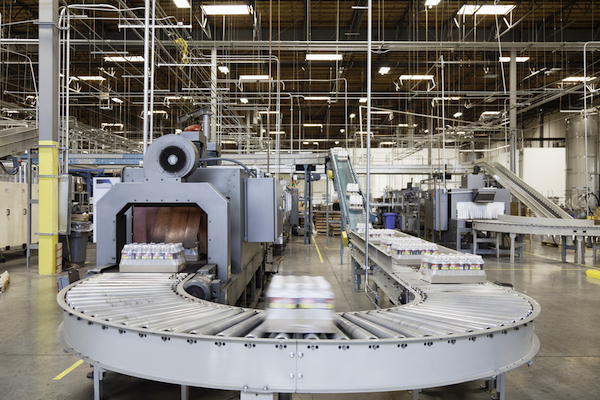Every industry will find a plethora of new applications as machines become smarter. The first two parts of this series explored how machine vision can help with defect detection and quality control. The final part will look at its use in the food industry, which has an astounding number of moving parts and is particularly risk-averse.
Proper inspection is critical in the food industry. Neither the government nor the customers do not tolerate mistakes. The drop in sales and consumer loyalty resulting from recalls can cripple a food company and subject it to fines or litigation.
Traditionally, companies used human inspectors to ensure product safety, quality, and consistency. However, this method was costly, subjective, and vulnerable to human error by inexperienced or weary workers. Machine vision solutions enable a food company to ensure high product safety and consistency levels while also lowering production expenses.
Machine vision-driven food inspection systems use a combination of software and hardware that performs image capture and processing functions to inspect food products on a production line at incredible speeds and without human intervention. These algorithms are capable of detecting 100% of inconsistencies.
Machine vision-driven systems can also help to minimize quality control downtime. Because the system is automated, it operates much faster, can work 24 hours a day, and does not require break times. Machine vision systems can also create logs of the data collected during automated inspections for subsequent review should there be a need for human oversight.
Machine vision systems can help a food manufacturing company in the following areas:
- Safety Inspection: Machine vision-driven food inspection systems can detect foreign substances in food packages and alert the company to the issue. Cross-contamination is a big issue as it can lead to problems for customers with food allergies, exposing the food company to legal action and negative press.
- Track and Trace: Machine vision-driven food inspection systems can track ingredients and completed, packaged products throughout the production line. They can detect inconsistent product codes, dates, lots, and barcodes, preventing food from exiting the line with incorrect information. They also keep codes from being illegible or missing.
- Labels: Incorrectly labeled food can trigger dangerous allergic reactions in customers, resulting in a costly, government-mandated recall and/or legal consequences for the food company. Machine vision-driven food inspection systems can detect incorrectly labeled products and remove them from the production line. These systems can also detect misaligned or wrinkled labels, which can harm the company’s reputation by indicating sloppiness or carelessness.
- Packaging: Machine vision-driven food inspection systems can detect misprinted or illegible packaging before it exits the production line. They also detect when labels for a different product or a different destination for a product are substituted for the correct label or when lids are not consistent with the rest of the packaging. These systems can also check the quality of recycled packaging materials, ensuring that they are clean and in good condition.
- Container Integrity: Machine vision can save the food company a fortune by preventing spills and spoilage from poorly sealed containers. A machine vision-driven food inspection system will detect any breaches in the seals of the containers. Fill levels are also examined to ensure that the products are consistent.
Machine Vision Applications in the Food Industry
There are numerous applications for machine vision in the food processing industry, with new variations on the technology surfacing regularly. These include:
- Frame Grabbing: When it comes to visual inspections of food products, each product has its own set of requirements. It is extremely difficult, if not pretty much impossible, for human eyes to perform detailed scans of a large batch of tiny food products—think peas or nuts—as they pass over a production line. Machine vision-driven food inspection systems can collect still images of tens of thousands of tiny, moving products at once through “frame grabbing” to detect defects and sort them.
- Automated Sorting: Food inspection systems powered by machine vision can easily become part of a much larger automation push. Automation is a great asset to the food industry, resulting in increased worker safety and productivity and improved quality control across the board. Inspection systems equipped with machine vision cameras can detect defects in single products or whole batches of products. However, physically separating these food products must be as efficient as identifying them. This makes machine vision a great addition to technologies like compressed air systems that can gently blow away and remove even a single grain of rice from a larger batch of rice in preparation.
- Near-Infrared (NIR) Cameras: Barcode and QR code readers are two examples of machine vision. Near-infrared cameras, a newer technology, are already significantly boosting the applicability and capabilities of machine vision systems. Take the example of a bruised apple. Physical damage to fruits and veggies may not always manifest itself immediately on the outside. However, near-infrared technology broadens the light spectrum that cameras can see, allowing them to identify interior damage to the apple before it manifests itself on the exterior. It has a clear edge over previous-generation technology and human inspectors, both of which can miss such flaws.
Conclusion
By 2024, the market for machine vision technology is expected to be worth $31.1 billion. This can only mean one thing: machine vision is the future of the manufacturing industry. It is important to note that neither machine learning nor machine vision is focused on producing technology that thinks and sees like people. However, these systems can easily surpass human workers and work wonders for a manufacturing business when implemented the right way.